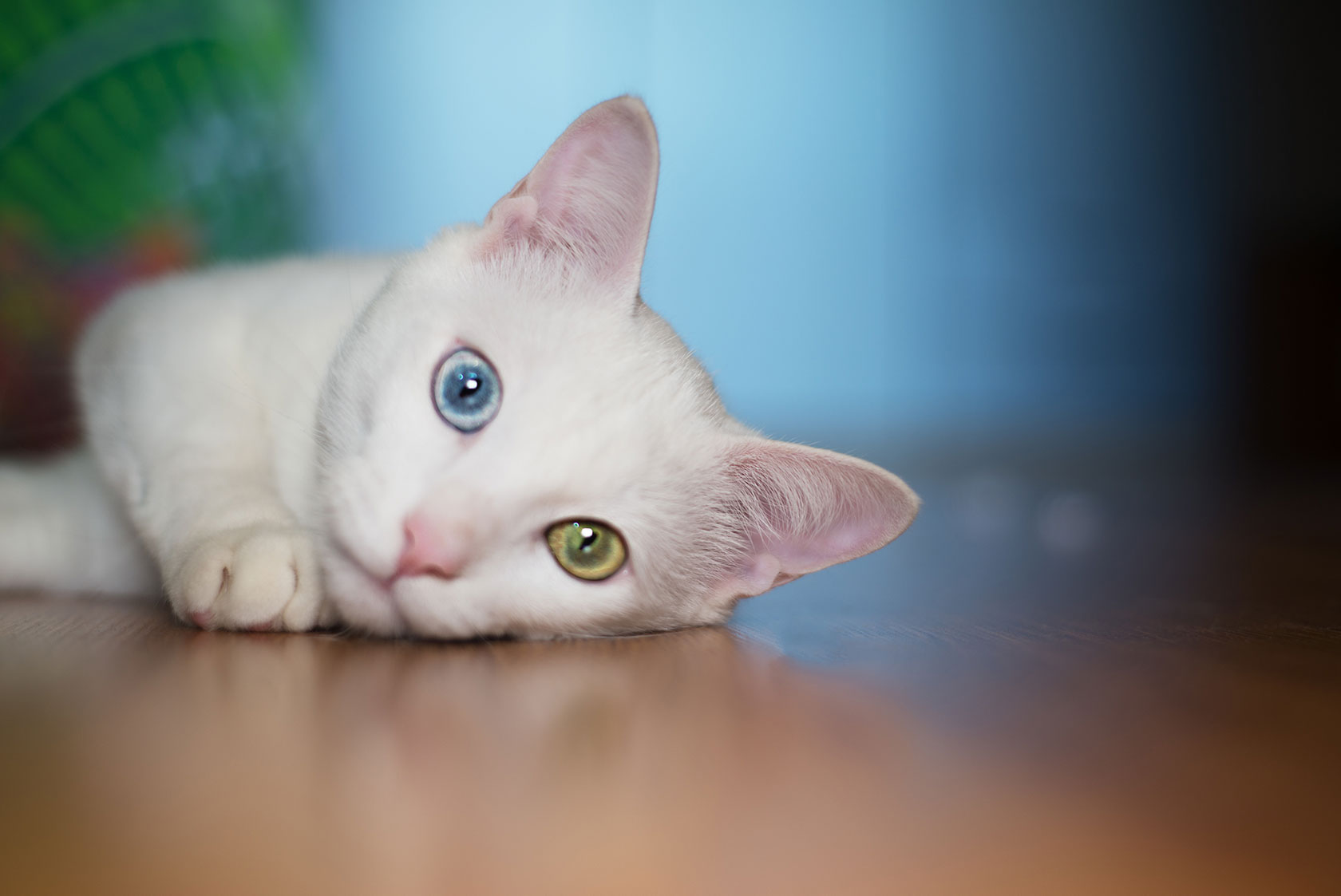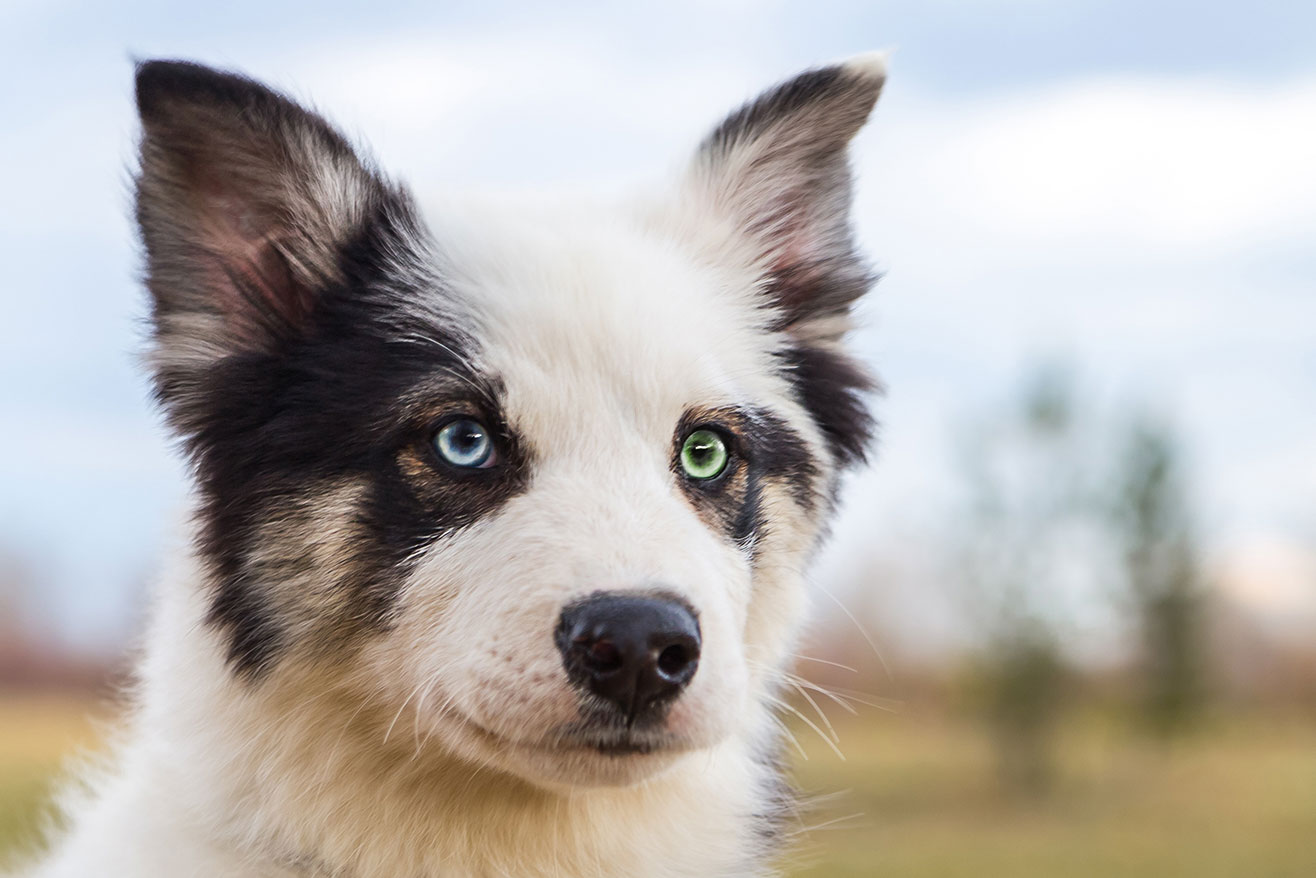Four-legged friends with two-coloured eyes - Heterochromia in animals

Humans love pets. An estimated 80 million European households own at least one pet. That's a considerable number!
Among these millions of pets is a significant number of animals that share a phenomenon that ophthalmologists and veterinarians call heterochromia. It is used to describe the state of having several eye colours – for example, a brown eye and a blue eye.
Our editor has spoken to Lentiamo's head optometrist Jakub Odcházel about what Heterochromia is, what causes it, and how the phenomenon differs between humans and aminals.
But that's not all: He also gave us some incredibly cute, fluffy pictures.
What is heterochromia?
Heterochromia, an ancient Greek word that derives from héteros (different) and chróma (colour), refers to the difference of colour in hair, skin or iris.
The iris, the thin
structure that surrounds the pupil, gives the eyes their distinctive colour.
The pigment
melanin plays an important role here. The more melanin an iris contains, the
darker the eye colour will appear. This phenomenon can also be observed, for
example, in human skin. The more melanin our cells contain, the darker our skin
tone is. For the eyes, this means that brown eyes contain more melanin than blue
eyes.
What is the difference between heterochromia in humans and animals?
Heterochromia is relatively uncommon in humans (e.g., affecting fewer than 200,000 people in the United States). However, it is a common phenomenon in some breeds of cats, dogs, cattle and horses.
That's because heterochromia is a genetic trait which, depending on the animal in which it occurs, may be due to inbreeding, genetic inheritance or mutation. In some cat breeds, such as the Turkish Angora, heterochromia is a desirable trait that breeders try to preserve.
Certain dog breeds, like Huskies, Australian Shepherds, and Louisiana Catahoula Leopard Dogs are more likely to have this cute trait.
What causes heterochromia?
Heterochromia is primarily classified as genetic (congenital, present at or shortly after birth) or acquired according to its time of onset. Most cases of heterochromia are hereditary and may be associated with a congenital syndrome. Other cases are acquired and caused by a disease or injury.
Be on the safe side – Have an eye exam
Most cases of heterochromia are congenital. Although, if your pet has different coloured eyes we recommend consulting a veterinarian for an eye exam to rule out other causes.
After the veterinarian has confirmed that your pet's eyes are healthy, be ready to receive compliments on the unique appearance of your pet's multi-coloured eyes! And if you are the one with heterochromia and want to harmonise your eye colors: coloured contact lenses may be used for cosmetic reasons.










